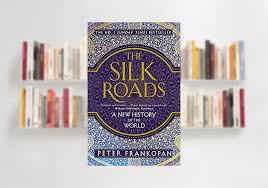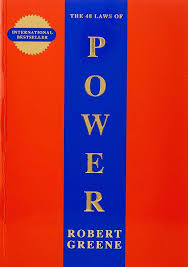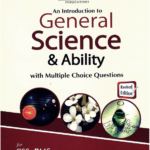Description
In “The Silk Roads: A New History of the World” by Peter Frankopan, one gets a sweeping and ambitious reinterpretation of world history with the Silk Road sitting at its center as the network of trade routes connecting the East and West. While this book was first published back in 2015, it actually shifts traditional Eurocentric attention in historical narratives to instead concentrate on regions that reach from the Mediterranean to China, Central Asia, the Middle East, and South Asia.
Overview of Key Themes
Turning the World History Upside Down Frankopan challenges the traditional view that Europe has been the point of center of the world’s most important historical events. Instead he argues that the real center of global power, culture, and exchange has long been the Silk Road-the vast regions stretching from China, across Central Asia, the Middle East, and into Europe. This region, according to Frankopan, was the crossroads of civilization where the greatest exchanges of goods, ideas, and culture happened in history.
Trade, Culture, and Ideas The Silk Roads served as just a passage for material goods, such as silk, spices, and precious metals, but also served as a passage for ideas, religions, and cultures. Frankopan explains how Buddhism, Christianity, and Islam all traveled through the Silk Roads, molding the civilizations they touched. Scientific knowledge, technology, and innovations also crossed those trade routes from Chinese inventions of gunpowder and compass to Islamic contributions in mathematics and medicine.
The Rise and Fall of Empires: Frankopan reveals through the book how empires have risen and fallen along the Silk Road, often in direct consequence of their control over these critical commercial routes. He ranges from the Persian Empire and the Mongols to the Byzantine and Ottoman Empires, presenting a broad variety of empires and civilizations, whose fortunes are closely intertwined with empires and civilizations based upon control over or benefits derived from the Silk Roads.
The Role of Religion Of course, religion is another of the major themes the book contains, that is, the role religion played in determining the course of history in the Silk Roads. Frankopan delineates how the major religions of the world spread through those roads and his examples involve, among others, how Buddhism, Christianity, Islam, and Zoroastrianism were spread by merchants, travelers, and missionaries. The economic exchange network became also a spiritual, intellectual one.
Economic and Cultural Impact The book explained how the Silk Roads trade led to the wealth influencing the economies and cultures across the globe. The cities of Samarkand, Baghdad, and Constantinople became commercial and intellectual because of their strategic location along the Silk Roads. Frankopan explains how Silk Road wealth financed the Renaissance in Europe and defined great world powers’ rise to the top.
The Importance of Central Asia This book draws attention to the role played by Central Asia, often much more seldom discussed in traditional histories. Be it modern-day Iran, Afghanistan, or the Central Asian republics, those regions were crucial for connecting East and West. It places these regions as not just conduits in a passive sense but, to say the least, as very important centers of cultural and scientific advancements in their own rights.
Format and Chronological Coverage
Frankopan has divided the book chronologically, crossing thousands of years in history-from ancient to modern time. He includes prominent periods of time such as:
Ancient Empires : Frankopan discusses how early empires such as the Persian Empire and Alexander the Great’s empire relied on the Silk Roads for wealth and power. It would also briefly touch on the Roman Empire in early trade networks.
Islam and the Arab Caliphates: The rise of Islam and the subsequent expansion of the Arab Caliphates play a central role in the shape of the flow of trade on the Silk Roads. The Islamic world, Frankopan describes, was a center of learning, commerce, and culture that connected Europe, Africa, and Asia.
The Crusades and the Mongol Empire: He, in his book, underlines how the Crusades had long-lasting impacts on East-West relations as well as in trade. He emphasizes the influential roles of the Mongol Empire in re-opening and guarding the Silk Roads during the 13th to 14th centuries that made a new possible scale of trade and cultural exchange.
The Age of Discovery and Colonization: The book follows the journeys of explorers like Vasco da Gama and Christopher Columbus in search of alternative routes to the East to eventually redefine terms for global trade when they began to use a new set of routes instead of the old Silk Road, thereby setting a new era of dominance by the Europeans.
Modern Times: Frankopan extends the narrative into the 20th century, explaining how the Silk Roads remained a key component of geopolitics during the two World Wars and the Cold War. He explores questions for the present and future, such as the re-emergence of China and its revival of the Silk Road concept through new ventures like its Belt and Road Initiative.
Major Takeaways
The Interconnectedness of Civilizations Frankopan’s work draws on the idea of interconnectedness of civilizations, and how empires and nations were always tied to the fate of others. Across these Silk Roads flowed goods, people, and ideas into this net that had long since surpassed its modern origin.
Challenging Eurocentrism By moving the center of gravity from Europe and eastward, Frankopan provides a much larger and more representative perspective of world history. For in fact, the East has played a role throughout history that was at least as significant — and at times even more significant — in matters relating to world affairs.
Conclusion Global Power and Geopolitics Frankopan shows that control over the Silk Roads has always been a source of power. The Silk Roads have often been battlegrounds for empires to dominate by military force, economic exploitation, or religious ideological conquest.
“The Silk Roads: A New History of the World” attempts a new angle on world history, centering the East and the Silk Road regions at the heart of global events. This history is colossal, covering millennia, and Pan nurtures deep familiarity with the often twined interconnections of civilizations. His work challenges the prevailing Eurocentric views, reminding readers of the importance of trade, culture, and intellectual exchange in shaping the world we live in today.
This book will be of interest to any student of world history, global trade, and the cultural and political exchanges that have shaped civilizations across tim










Reviews
There are no reviews yet.